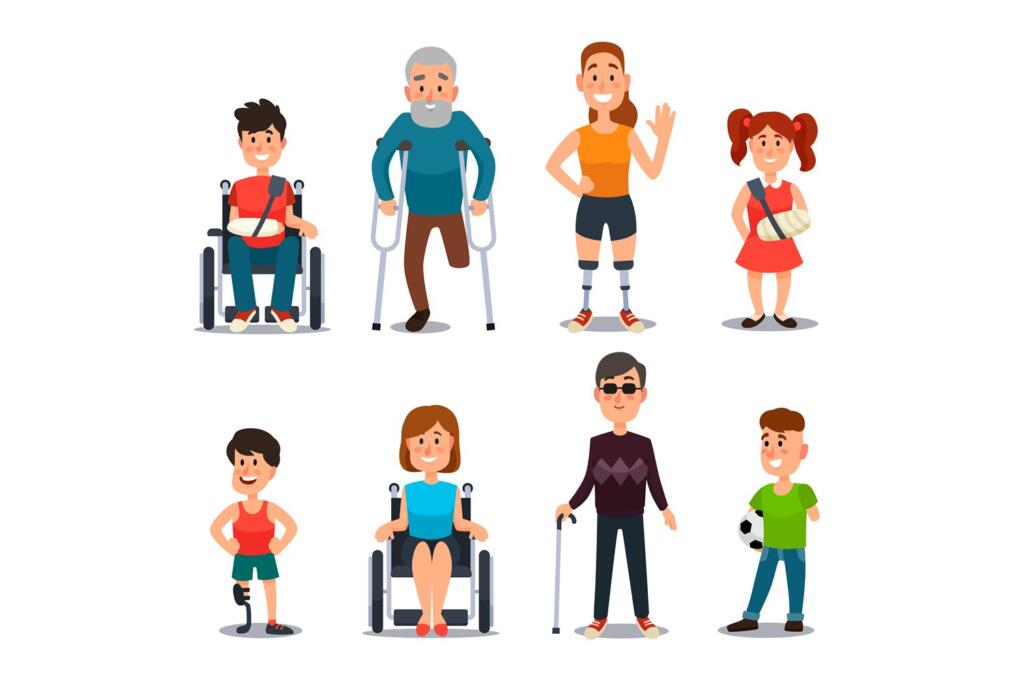The Supreme Court of India recently addressed the critical issue of stereotyping differently-abled persons in visual media and films. The court emphasized that such portrayals can perpetuate discrimination and inequality in society. As a result, the court has provided comprehensive guidance to filmmakers on how to approach this sensitive topic. This landmark decision aims to reshape the film industry’s approach to representing differently-abled individuals on screen.
Language in Film
The court stressed the significance of language used in films when depicting differently-abled individuals. Words that disparage or marginalize persons with disabilities can reinforce disabling barriers in society. Therefore, filmmakers should approach such language with extreme caution. The court noted that certain terms have acquired devalued meanings in societal perceptions about persons with disabilities. Films play a crucial role in shaping public opinion, and the language used can either promote inclusivity or perpetuate harmful stereotypes.
Representation in Film
Filmmakers are strongly urged to strive for accurate representation of medical conditions in their films. Misleading portrayals can spread misinformation and entrench stereotypes about persons with such impairments. This, in turn, can exacerbate the challenges faced by differently-abled individuals in society. The film industry has a responsibility to conduct thorough research and consult with experts to ensure that their depictions are as accurate as possible. By doing so, films can become powerful tools for education and awareness.
Diverse Representation
The court highlighted the importance of showcasing the diverse realities of persons with disabilities in films. This includes depicting not only their challenges but also their successes, talents, and contributions to society. By presenting a balanced representation, films can help dispel stereotypes and promote a more inclusive understanding of disability. Filmmakers are encouraged to explore the multifaceted lives of differently-abled individuals, showing them as active community members who contribute meaningfully across various spheres of life.
Stereotypes in Film
Filmmakers should refrain from lampooning differently-abled individuals based on myths or presenting them as “super cripples.” The court emphasized that such stereotypes can be harmful and do not accurately reflect the multi-faceted lives of persons with disabilities. Films should neither ridicule differently-abled characters nor portray them as having superhuman abilities. Instead, they should focus on realistic, nuanced depictions that capture the everyday experiences and challenges faced by differently-abled individuals.
Participation and Collaboration
The Supreme Court stressed the importance of involving persons with disabilities in the film-making process. This aligns with the principle of “nothing about us, without us.” Collaborating with disability advocacy groups can provide valuable insights and guidance on respectful and accurate portrayals in films. By including differently-abled individuals in various aspects of film production, from scriptwriting to acting and consulting, the industry can ensure more authentic and sensitive representations on screen.
Training and Sensitization in the Film Industry
The court recommended implementing comprehensive training and sensitization programs for individuals involved in creating visual media content. These programs should emphasize the impact of portrayals on public perceptions and the lived experiences of persons with disabilities. Topics should include the principles of the social model of disability, the importance of respectful language, and the need for accurate and empathetic representation. Regular workshops and collaboration with disability advocacy groups can foster a deeper understanding and commitment to responsible portrayal in films.
Balancing Creative Freedom in Film
While acknowledging the importance of creative freedom, the court clarified that this freedom does not include the right to lampoon, stereotype, misrepresent, or disparage marginalized groups. Filmmakers must balance their creative expression with the fundamental and statutory rights of those portrayed. The court emphasized that there is a difference between depicting challenging situations and outright promoting harmful stereotypes. Films that infringe on the rights of persons with disabilities are not protected speech, and filmmakers must be mindful of the overall message their work conveys.
Impact on Film Censorship and Certification
The court’s guidance may impact the film censorship and certification process in India. The Central Board of Film Certification (CBFC) might need to revise its guidelines to incorporate these new considerations when evaluating films. This could lead to more stringent reviews of films depicting differently-abled characters, ensuring that they align with the court’s recommendations for respectful and accurate portrayals.
Future of Disability Representation in Indian Cinema
This landmark decision has the potential to significantly reshape the landscape of disability representation in Indian cinema. As filmmakers adapt to these guidelines, we may see a shift towards more nuanced, authentic, and diverse portrayals of differently-abled characters in films. This could lead to increased visibility and better understanding of disability issues among the general public, ultimately contributing to a more inclusive society.
Conclusion
The Supreme Court’s guidance aims to promote more inclusive and respectful portrayals of differently-abled individuals in films. By following these guidelines, filmmakers can contribute to changing societal perceptions and fostering a more inclusive environment for persons with disabilities. As the film industry adapts to these recommendations, we can hope to see a new era of cinema that truly represents and celebrates the diversity of human experiences, including those of differently-abled individuals.
ALSO READ: Nepal’s Communists are Worried About Hindus due to ………..?
